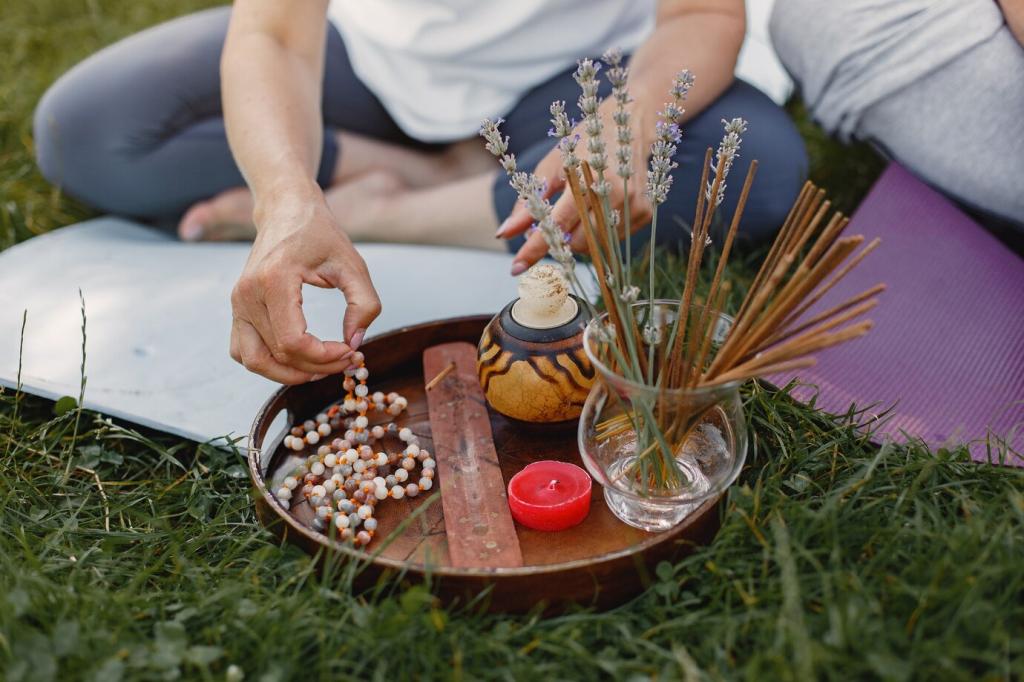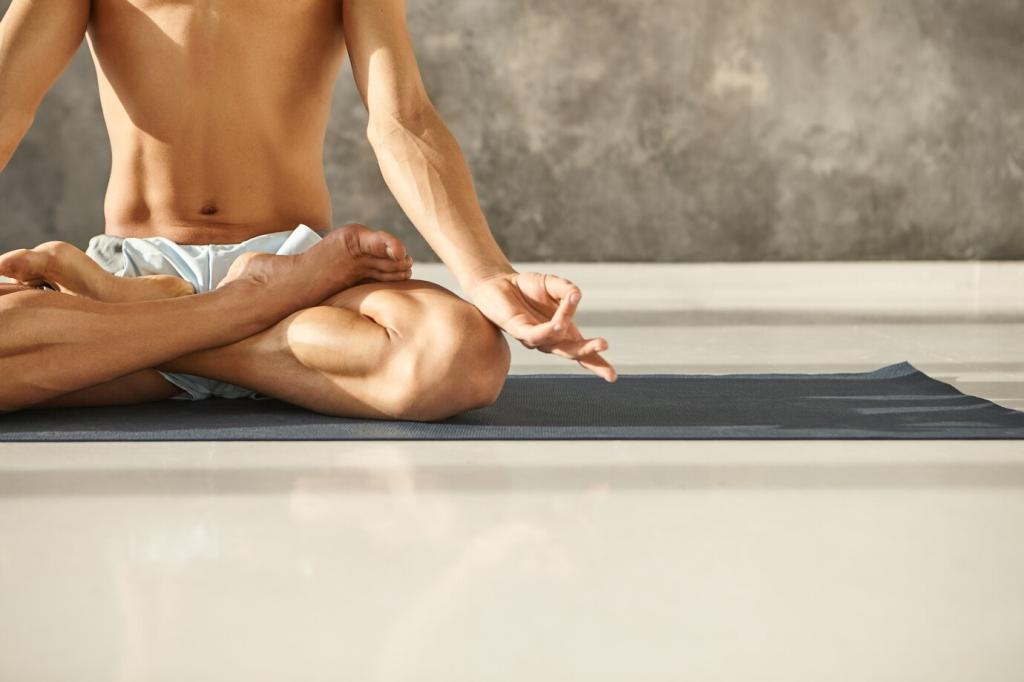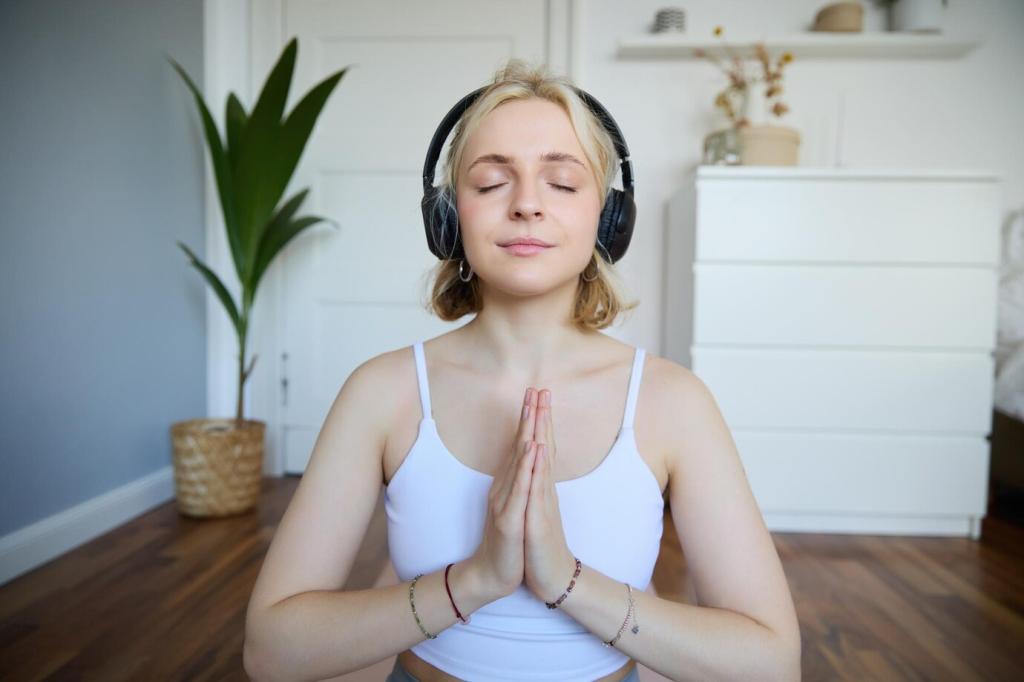Begin Your Calm: Tips for Beginners Starting with Guided Meditation
Selected theme: Tips for Beginners Starting with Guided Meditation. Welcome to a gentle doorway into stillness, where practical guidance meets compassion. Start small, breathe with intention, and discover how guided meditation can steady your days. Share your first impressions, subscribe for weekly encouragement, and grow with us.

Why Your First Session Matters
Your first guided meditation sets the tone for how you relate to practice: not as a test, but as time with yourself. Approach it like meeting a friend, curious and unhurried, and you will return more willingly tomorrow.
A Simple Pre‑Meditation Ritual
Lightly stretch your shoulders, silence notifications, and place one hand on your chest for three slow breaths. Whisper your intention, like calm, clarity, or patience. Ritual signals your brain that this moment is safe and important.
Common Misconceptions Newcomers Carry
Many believe meditation means emptying the mind. Instead, it means relating differently to thoughts. In guided meditation, a supportive voice keeps you anchored, so wandering is expected, noticed, and kindly welcomed back without judgment.


Breath, Body, and Mind Basics for Guided Sessions
01
Place attention where breath is clearest—nostrils, chest, or belly. Feel the rise, fall, and pauses. When you drift, the guide invites a kind return. Each return is progress, strengthening steadiness without force or frustration.
02
Follow the guide slowly from toes to crown, noticing temperature, tension, tingling, or ease. There is nothing to fix. Naming sensations builds gentle intimacy with your body, which beginners often find profoundly calming and reassuring.
03
If the mind races, label it thinking, then feel one breath. If the leg twitches, soften the jaw and adjust. Guided words normalize these moments, teaching you to respond with curiosity instead of criticism.

Set a timer for two minutes and press play. Celebrate completion. Tiny, daily guided sessions lay neural pathways for ease. Momentum, not duration, is the beginner’s best friend in forming a dependable meditation habit.

Attach your guided practice to an existing routine: after brushing teeth, before coffee, or during lunch. Track streaks lightly to spark motivation, but let compassion interrupt perfectionism when life inevitably surprises you.

Journal one sentence after each session: today felt cloudy but calmer by the end. Progress appears as softer reactions, steadier breath, or kinder self‑talk. Ask yourself monthly, what feels different in ordinary moments?
Overcoming Early Roadblocks in Guided Meditation
If you keep nodding off, try morning practice, brighter light, or seated posture with a supportive cushion. Choose guides with slightly brisker pacing. Calm is clear and alert, while drowsiness feels heavy and foggy—notice the difference kindly.
Learning Through Stories and Community
Write for sixty seconds: sensations, emotions, or a phrase that stayed with you. Journaling cements insights, helping beginners spot subtle benefits that daily stress would otherwise hide or quickly dismiss.
Learning Through Stories and Community
Maya started with a five‑minute body scan on her lunch break. After two weeks, she noticed fewer spirals during emails. Her secret was humility: miss a day, begin again, always guided, always kindly. What’s your story?



Integrating Guided Meditation into Everyday Moments
Before opening the next tab, breathe with a one‑minute guidance. Notice your feet, shoulders, and jaw. This tiny reset prevents stress momentum from carrying you into the afternoon with mounting tension and scattered attention.
Integrating Guided Meditation into Everyday Moments
Use audio guidance while parked or on public transit. Eyes open, follow breath and ambient sounds. Arrive more present for work or home, proving beginners can practice almost anywhere with safe, thoughtful choices.
